Good News / Bad News
- susankavanagh
- Apr 28, 2020
- 5 min read
As we enter spring everything seems to be growing like crazy. Unfortunately in a small number of cases new growth brings new problems. So I'm going to start with The Good News, that way if you don't want to read The Bad News you can stop reading before you get to the end!
The Good News
New flowers and foliage
The garden now has quite a few flowers, and loads of buds and new leaves with promises of things to come. I even have an Astrantia which started flowering in March, my other Astrantias have barely begun to grow!
Left to right and top to bottom: Astrantia 'April Love' - as the name implies this can be an early variety but usually late April / early May, not this early; Fuchsia 'Hawkshead'; Vinca minor (periwinkle); Saxifrage 'Touran Deep Red'; Solanum crispum 'Glasnevin'; Cornus Sanguinea 'Midwinter Fire'; Justicia rizzinii; Halimiocistus Sahucii; Escallonia rubra; Citrus(unknown variety of orange); Choisya ternata; Clematis Montana (unknown variety. This is actually our neighbour's plant but it grows across the fence so I get to enjoy it too!); Berberis darwinii (flowers have been particularly prolific and long-lived this year); Acer palmatum 'Atropurpureum'.
Edibles
I grow a number of fruit trees and bushes, herbs and vegetables and the vast majority of these are doing well with plenty of flowers or young fruit:
Left to right and top to bottom: my first tomato flower for this year; broad beans; potatoes; plums; pears; fig; blackcurrant flowers; blueberry blossom; amelanchier lamarckii flowers; oregano; chives, mint and sage.
Natural Changes
One of the most exciting things about a garden is that it never stays the same. Over the course of this month my Winter heather has died off but there are now buds on the Summer varieties, the new growth on my pieris has turned from bright red to mellow brown, my rhododendron from pink to white.
Left to right and top to bottom: heather, 'Pieris Mountain Fire' and Rhododendron all shown at month start and end.
The Wild Garden
I deliberately leave a few, carefully controlled areas in my garden "wild" to encourage wildlife. We have nesting birds, insects, squirrels, foxes and occasional badgers; the local cats seem to quite like visiting too!
Left to right and top to bottom: ground elder (the leaves and stalks are delicious stir-fried if you pick them while they're young); ground ivy and nettles; Sonchus oleraceus L. (sowthistle, young leaves are great in salads); lesser celandine (bit of a spreader but dies off naturally around May); herb robert and garlic mustard (the leaves of the latter can be used in salads); brambles (hopefully I'll get some blackberries later in the year); bee on rhododendron (always a welcome visitor, although if bees are allowed to feed solely on rhododendrons the honey the produce is toxic for humans); dragonfly; wall ivy; dandelion (all parts of the plant can be used in food or drink).
The Bad News
Fungus
A mild but very wet February and March have not been kind to all of my fruit trees. These conditions encourage lots of different fungal infections, and a quick inspection has revealed that my almond tree is suffering from peach leaf curl (the name is misleading, it's not just peaches it affects) while the new growth on my apple tree is riddled with powdery mildew. I don't like to use chemicals in my garden if I can possibly avoid them so I'm attemting to control both outbreaks culturally. The almond tree will probably be alright, I've removed the affected leaves and am checking regularly for any new ones. The apple tree unfortunately is a write-off for this year as I've had to remove all new growth, but hopefully things will improve next year.
My Escallonia rubra is also looking rather odd. On one side it's find, on the other it has completely died. I can't be sure but from past experience I suspect this may be another fungal infection although nothing's visible at the moment. I will try pruning it and see how it responds.
Left to right: peach leaf blight on almond leaves; mildew on apple leaf; almonds; Escallonia rubra
Pests
Warm weather brings out garden pests too. When my mother in law died last year I "rescued" her favourite rose - it had already been moved from her previous address - and planted it in my own garden rather than sell it to strangers. I have no idea what variety it is, she bought it as a bargain from Woolworths years ago, but it blooms very freely with roses in three different shades. It's thriving and has loads of buds, but aphids of all kinds also love it so I'm having to make regular inspections and squash them when I find them.
Something's been eating my Coleus too, but despite regular inspections at various times of day and evening I've not yet caught it in the act so not sure what's doing this.
Meanwile, the local squirrels have been amusing themselves by digging up my new container plants and pulling down parts of my golden willow tree, but they're so cute I tolerate them!
Left to right: rose buds; aphids; something's been eating my coleus; willow and container attacked by squirrels.
Ivy
Firstly, let me clarify: I do not see ivy as a problem. I have ivy growing both on the ground in one of our wild areas (see above) and against the walls which form part of the boundary of our garden in order to hide the brickwork, which I find unattractive in a garden context. It supports pollinators and numerous insects,and we also get birds building nests in its leaves.
In a previous post I've addressed the question of whether or not ivy can cause damage to walls: https://www.seeingthefuchsia.com/post/the-ivy-controversy (the answer is that if the wall is sound it won't cause damage and will actually protect the wall, but in certain circumstances it may aggravate existing damage).
I do, however, take care to keep it under control. I get up on a ladder and inspect both the ivy and the wall every month, trimming it back to make sure it stays on our side of the boundary. This month unfortunately I spotted that a few stems had penetrated an already damaged wall on one side of the garden so I regretfully took the decision that it would have to come down. Fortunately that area is sunny so I have ordered some climbing passiflora and
On the other side of my garden the wall is sound so the ivy is not a problem. In fact, the combination of deep shade from the wall and extreme dryness caused by the neighbour's giant Monterey Cypress tree means that ivy is pretty much the only thing which will grow there. Unfortunately the lovely gentleman who used to live there died last year and his widow has decided that our ivy is no longer welcome, cutting it right down to the very edge of the wall on our side and giving it a push to dislodge it. I've tried asking her politely not to do this but she simply shouted at me rudely, informed me I should "consider myself lucky" to have a huge brick wall in my garden and refused point blank to listen to my point of view! I have put in place a series of wires near the top of the wall in an effort to stop this from happening again, and have notified her that we have birds nests there which must not be disturbed.
Left to right: ivy growing on our wall, in this area the combination of shade and dryness makes it difficult to grow anything else; ivy deliberately dislodged by my neighbour; bird's nest damaged and abandoned after my neighbour dislodged my ivy; ivy removed by myself due to stems penetrating existing holes.








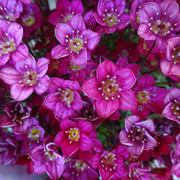


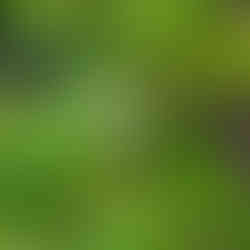














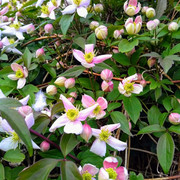













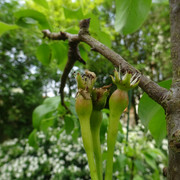

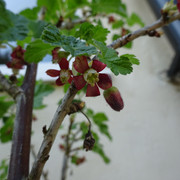





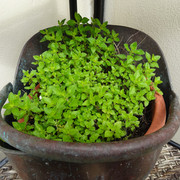

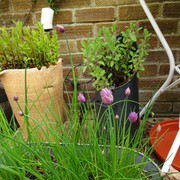


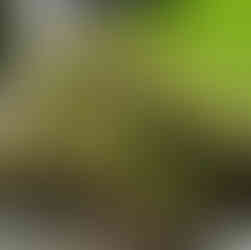













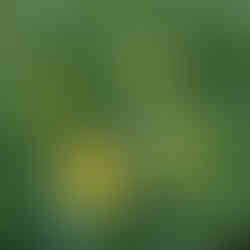








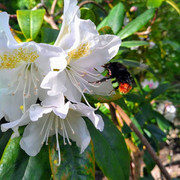







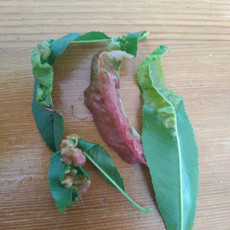







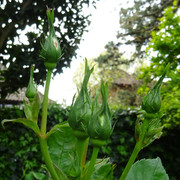















Comments